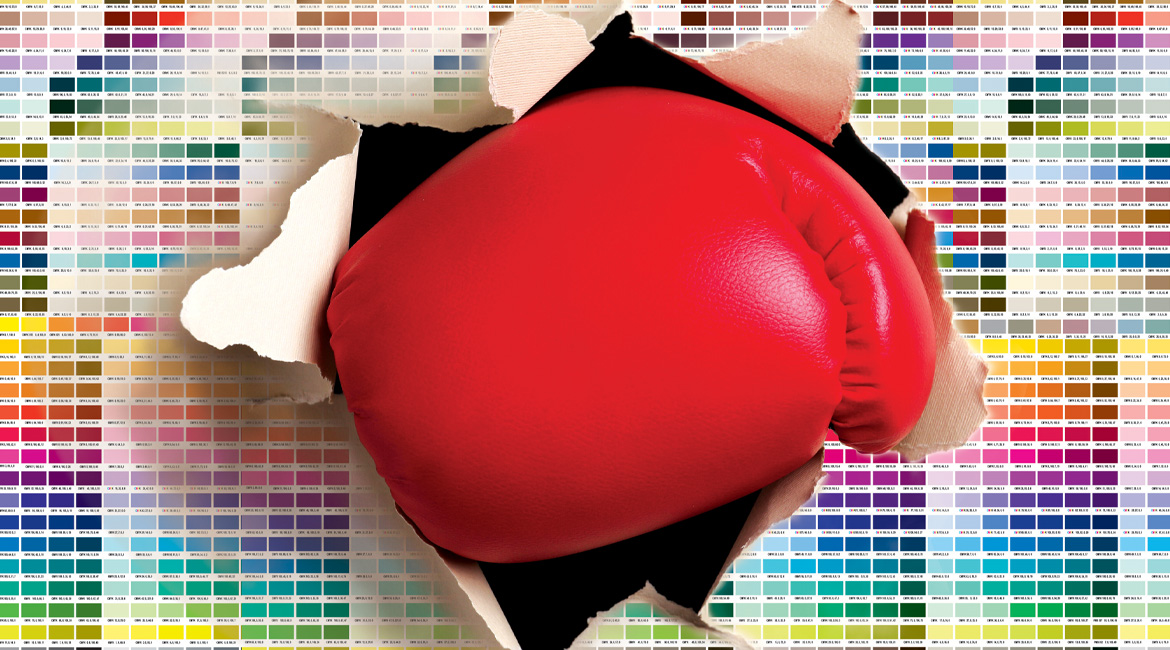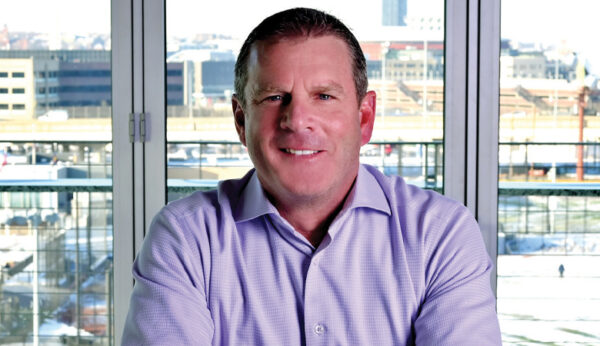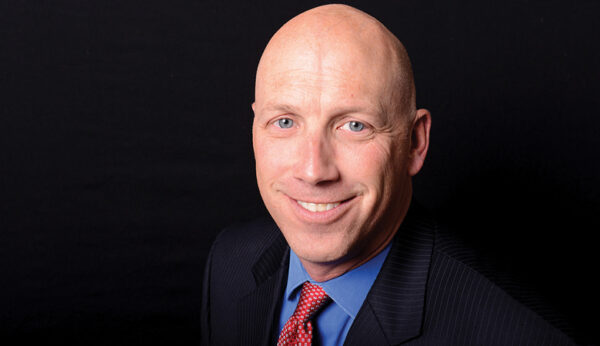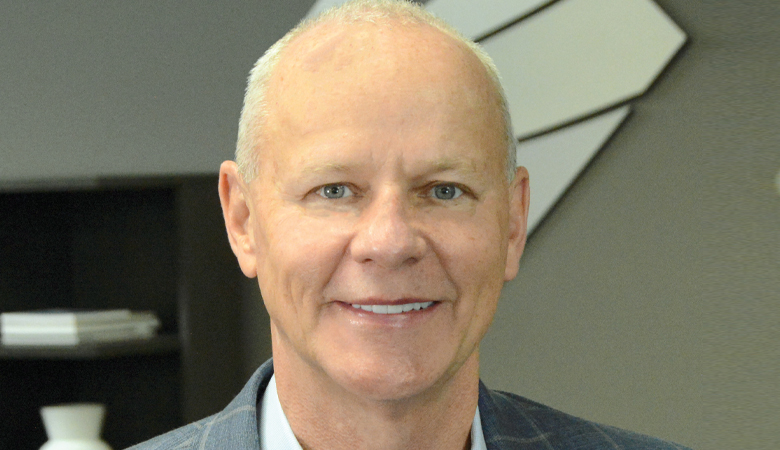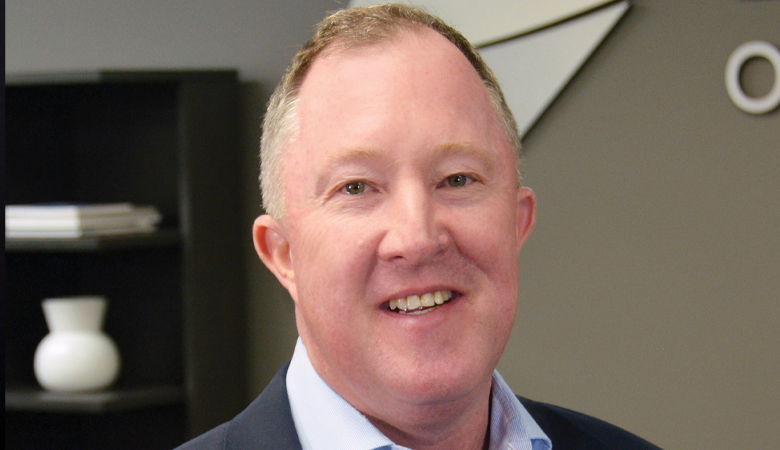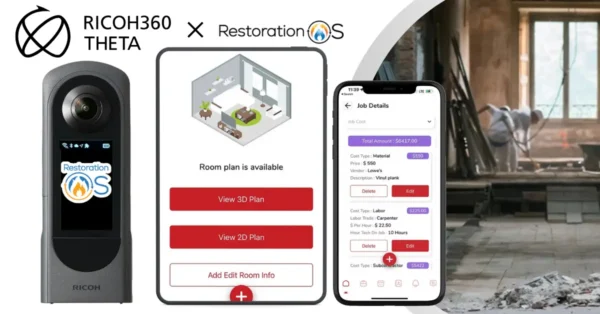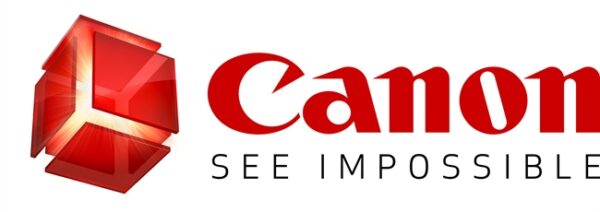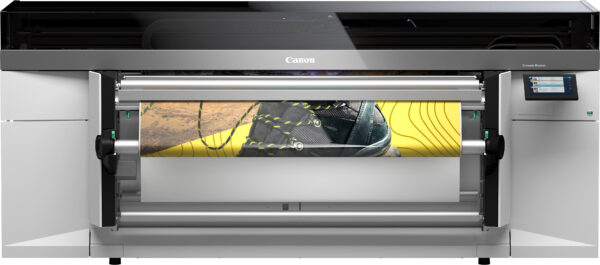Four dealers discuss their strategies for growing this all-important diversification opportunity.
We continue this special issue about production print with interviews with four dealers. Each of the first three represents a different manufacturer. They’re in no particular order: Canon, Konica Minolta, and Ricoh. The fourth is relatively new to this business segment, and we thought it would be a good idea if we allowed him to explain his motivation for entering it.
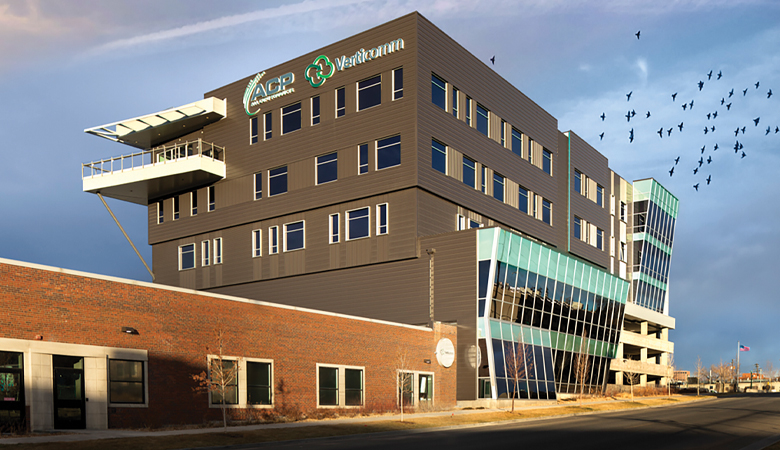
All Copy’s Denver headquarters.
All Copy Products, Denver, Colorado
Production Print OEM: Konica Minolta
- Brad Knepper
- Troy Baranek
We start with All Copy Product’s Brad Knepper, whose production print vendor is Konica Minolta. Joining Knepper in our conversation was Troy Baranek, vice president of sales, who shared his insights and experiences for success in production print. Their responses are denoted as B&T in the following interview.
Frank: How long has All Copy Products been promoting, selling, and servicing Konica Minolta’s production print offerings? What were your original expectations when this effort was launched?
B&T: All Copy Products began in 1999. However, in terms of production print, we have had a focus on production for the last five years. All Copy recognized the opportunity to significantly grow revenues by making the necessary investments in building a sales and support team to increase our production presence in our markets.
Frank: Why Konica Minolta and have you considered a second line?
B&T: Yes, we have Canon. Their segment 5 & 6 color products and the Titan Black give us a marketing balance and a very complete offering when combined with Konica Minolta.
Frank: Some dealers have prioritized in-plants as the most desirable market for selling production print. What is All Copy’s strategy?
B&T: We made the decision to focus on commercial printers. For the last five years our volume has shown steady increases. We think we do a better job with them, and our results have shown us that as a vertical market, the sales keep coming as long as we continue to push as hard as we can. This has given us the results we wanted. That is not to say that commercial printers can be more challenging and less profitable to work with. But there are also particularly good commercial printers that are reasonable to work with and deliver high volumes.
Frank: One of the most common strategies for achieving success in production print is hiring an SME (subject matter expert). What was All Copy’s approach?
B&T: We were extremely fortunate we had Brian Earley, a unique salesperson who chose to make a much bigger investment in his own training. On his own he gained knowledge that enabled him to succeed without the support of an SME. Eventually, as our volume started to grow, Brian wasn’t able to manage all the various roles, requiring us to add SMEs and enjoy even greater success.
Frank: With the breadth of products that Konica Minolta provides, what portion or segment have you been most successful with and why?
B&T: We have been most successful with the KM C7100, C12000, and C14000 models. If you look those products up, they represent success in segments 5 and 6 – 110 impressions per minute (imp) and 140 imp.
Frank: The most interesting thing about production print is that the segment includes various other products, such as large format and labeling. Was that the case with you?
B&T: We have had success with both Konica Minolta and Canon [large format] products. We have had limited success with labeling.
Frank: Aside from selling products to commercial printers what other areas have contributed to your success? We often hear that schools and CRD (Central Reprographic Departments) are particularly good prospects. Is that your experience?
B&T: Schools have been a good market that enables us to sell products at a higher revenue. We like collaborating with commercial printers and have done well with them. CRD hasn’t been a big market for us.
Frank: How did you structure your production group? How many salespeople, techs, and SMEs are dedicated to production, and are the territory salespeople allowed or encouraged to participate?
B&T: We have a limited number of dedicated reps who manage many of the easily identified production print clients that deliver particularly reliable results. We also allow our down-the-street reps to find and sell production print products with the help of our specialist.
Frank: Does production contribute to a greater degree of profitability, and if so, why?
B&T: [Yes, because] they are larger companies than our office clients. We don’t receive a higher margin of profit, but the volume is significantly higher, and the results are greater revenue from supply sales.
Frank: The purpose of this series has been to encourage dealers to examine production print as one of the most important means of diversifying a business that’s solely reliant on the office. What would you say to one of your fellow dealers who’s considering expanding into production print?
B&T: I agree about diversifying your business to a degree. While there may be differences, there are still parallels. The truth is, it should not be that difficult to take on and succeed. The sales and marketing considerations aren’t as far from copiers as you would think.
Frank: Can you provide three reasons why a dealer should get into the production print space?
B&T: Growth, increased profit, and the type of products that enable dealers to reach volume gates with their manufacturers. Those are certainly the three best reasons for us.
In Praise of All Copy Products
“All Copy Products is one dealer that truly recognized the importance of this opportunity and the impact it would have on their aftermarket revenue, top-line revenue, and profit. They’ve seen substantial growth in both units and revenue since 2019, and we couldn’t be more thrilled with their success.” – Laura Blackmer, president, dealer sales, Konica Minolta Business Solutions U.S.A.
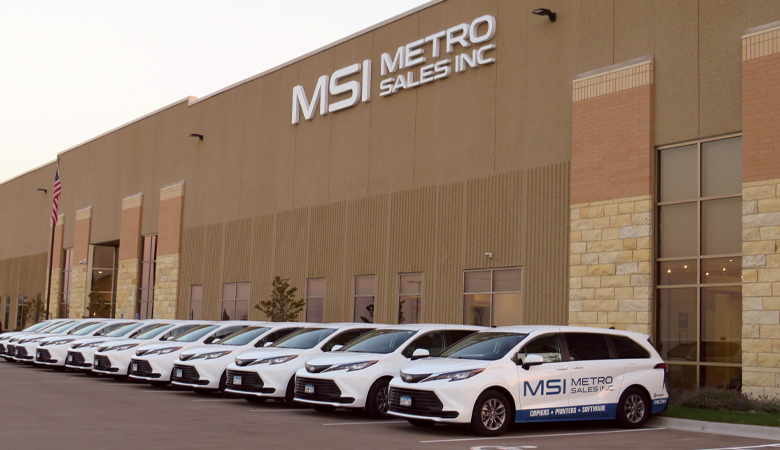
MSI headquarters and its fleet of service vehicles in Burnsville, Minnesota.
Metro Sales Inc. (MSI), Burnsville, Minnesota
Production Print OEM: Ricoh
Dan Tuohy, president of Metro Sales Inc., shared his insights and experiences about how his dealership has been successful selling production print. He was joined in the interview by Melvin Nametape, production specialist; Jared Freese, production specialist; and Michael Franczyk, director of advanced solutions.

Melvin Ametepe, production print specialist, and Dan Tuohy, CEO.
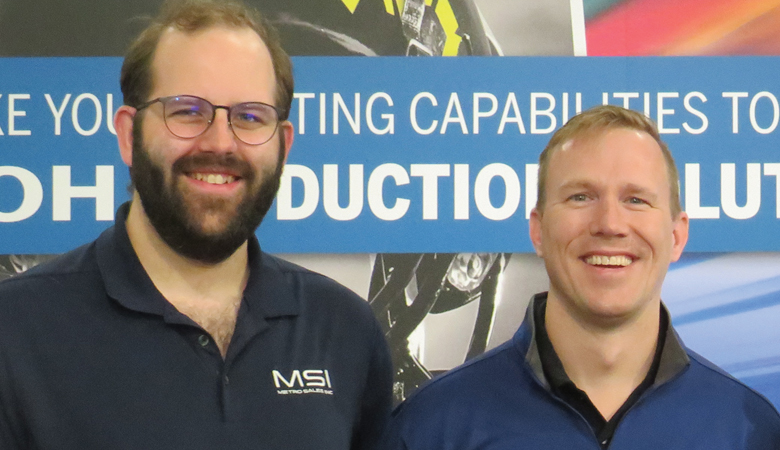
Michael Franczyk, director of advance solutions, and Jared Freese, production print specialist.
Frank: How long has Metro Sales Inc. been promoting, selling, and servicing Ricoh’s production print offering? As a follow-up, what were your original expectations when this effort was launched?
Tuohy: We’ve been Ricoh dealers for 40 years. We entered production 15 years ago and finally took it very seriously over the last four years. We realized it was an untapped opportunity. You can make money with production if it’s done correctly.
Frank: Let us follow that statement to do it correctly. One of the most common strategies is hiring someone who’s an SME in that space. If you didn’t do that, what was Metro Sales’ approach? Would you recommend emulating that type of first step or something else?
Tuohy: Metro Sales had a team in place when I joined them. I had many years with Xerox production at Global Chicago. At Metro, we have an expert and a particularly good sales arm. You need a salesperson focused on production. You also need a direct sales effort and an expert in training. Then, you hire and train (familiarize the person with your dealership) the product expert. It’s up to him to get everything going. Combining a product expert and a direct-selling production expert will get you going in the right direction. [You also need] a capable service organization that can transition to servicing production-type products.
Frank: With the breadth of products that Ricoh offers, what products have you been most successful with, and why?
Tuohy: We’ve had a lot of success within in-plants and large corporations. We feel that Ricoh is on the top of the game for dealers. We’re a dedicated Ricoh dealer with the best support possible. A prime example is selling nine 9500s into the in-plant production space. We found that the end user who had done his homework was well-educated about what Ricoh had in production. It appears they’re discussing with others to determine what works best for them amongst themselves about Ricoh products.
Frank: The most interesting thing about production print is that the various other technologies can be easily exploited. We’re speaking of large format and labeling as the two most common. Was that the case with Metro Sales Inc.?
Tuohy: That hasn’t been the case for us. We’ve approached production based on what we can do and do well. Then continue to do it. I see our success as a trend within the in-plants of big corporations. Software plays a key role in gaining customer buy-in. You take the approach of software first; you end up removing your competitor, and the hardware follows. We promote PrintNet [Cloud-based web-to-print management software that simplifies printing] as a digital storefront. It allows for print ordering to be done by customers and submitted as a JDF file. It makes managing print easy.
Frank: Aside from selling products to commercial printers, what other areas have contributed to your success? We often hear that schools and CRDs are particularly good prospects. Is that your experience?
Tuohy: Actually, we haven’t done well with commercial printers. We’ve sold to some of them and those that stay with us do so because they like our service. The problem is when selling to commercial printers they want you to go right down to the bottom in price. In-plants is a market where you can insert multiple units. You’re also going to get after-market service with opportunities to sell them more or different products. The other area to stay away from is print per pay.
Frank: How did you structure your production group? How many salespeople, techs, SMEs are dedicated to production, and are the territory salespeople encouraged to participate in selling production print?
Tuohy: Territory sales are incredibly supportive and very much involved. They receive a 100% commission, and they train all copier reps on production print. We have a select group of techs, of which 20 are dedicated.
Frank: We know Metro Sales’ history quite well. Your former owner, Jerry Mathwig, was one of the most dedicated and successful dealers in terms of operating a single line. He wasn’t about taking on another manufacturer to expand the capabilities of the production offering. Would you consider taking on a second line?
Tuohy: We’re continuing what Jerry has done for so many years, and we’re not going to change because we’re successful and plan to stay that way.
Frank: What would you say is the best strategy to get started selling production print?
Tuohy: Have the SMEs and the correct targeting of markets. Don’t make the mistake of starting with print for pay. Nobody ever makes out by selling print for pay. Start small, grow slowly with light production in churches and charter schools, and then grow into in-plants. We’re one of the top Ricoh dealers; you can grow something from nothing.
Frank: Profitability is a big concern for many dealers today. Is production print revenue as profitable as the other products you sell?
Tuohy: Production print is our target profit and the key to our growth strategy.
Frank: The purpose of this series has been to encourage dealers to take a hard look at production print as one of the most important means to diversify a business that’s solely reliant on the office. What would you say to one of your fellow dealers?
Tuohy: Talk to me! I’m always looking for conversation. We’re happy to talk to our fellow dealers. Our approach is collaborative. We’re a humble bunch, and you’re only the second interview we’ve done. Candidly, we did so because Ricoh asked us. Enjoy the opportunity to speak to a fellow dealer and learn about what they’ve done to be successful.
Frank’s note: Before we leave Metro Sales’ efforts in production print, allow us to give you a look at the results of their sale of nine 9500s. These are conservative estimated street prices and are not listed. Here’s what we believe it will yield over the next five years. The total value of the hardware sale was approximately $350,000 or $150,000 per printer. Service and supply revenue will be approximately $1 million annually or $5 million over a five-year period.
Kudos to Metro Sales
“Metro Sales/MSI is an amazing Ricoh partner. The history of this relationship personifies what this industry is all about, and the evidence of its power is the tens of thousands of loyal customers in Minnesota and surrounding territories they cover. Dan Tuohy is now taking that success to the next level, expanding their workflow solutions offerings and production.” — Jim Coriddi, chief dealer officer, dealer division, Ricoh USA
“Over the last two years MSI has made some key investments in both production service and sales structure to give them a competitive advantage in the markets they serve. In addition, Dan and his leadership team have made a conscious commitment to make production a key growth pillar as part of their business plan. This is the core of why MSI’s production business is accelerating to benchmark levels. I see MSI’s production business scaling to a whole new level over the coming years.” – Brian Balow, vice president, graphic communications, production solutions, Ricoh USA
MSI headquarters and its fleet of service vehicles in Burnsville, Minnesota.
Left to right, Melvin Ametepe, production specialist; Jared Freese, production specialist; Michael Franczyk, direct of advance solutions; Dan Tuohy, CEO, president.
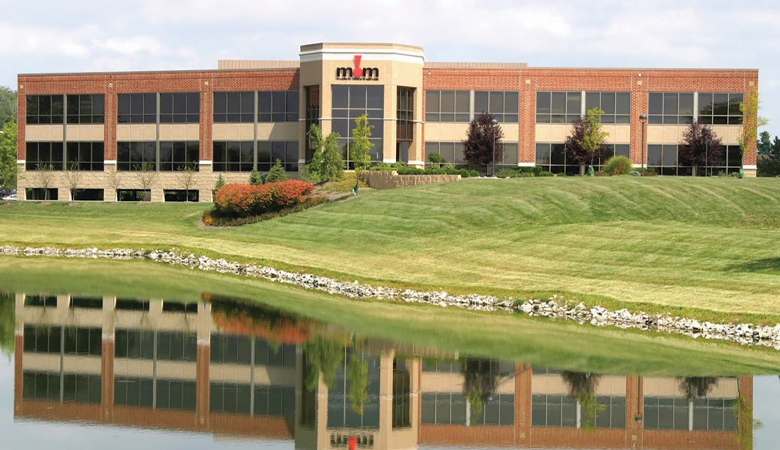
Modern Office Methods headquarters in Cincinnati, Ohio.
Modern Office Methods, Cincinnati, Ohio
Production Print OEM: Canon U.S.A.
We continue our exploration of dealers engaged in production print. In this interview, we visit Modern Office Methods (MOM) in Cincinnati, Ohio. Kevin McCarthy is the owner and CEO. He was kind enough to bring his team of production experts, who have years of experience not only in selling and servicing production-type products but also in digital front ends.
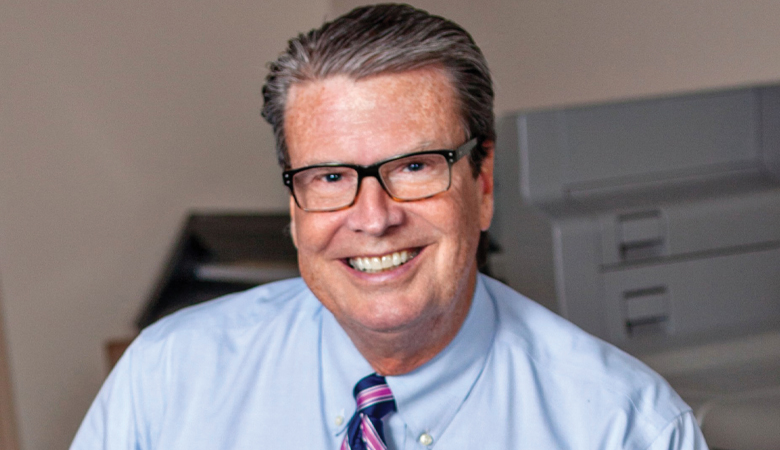
Kevin McCarthy
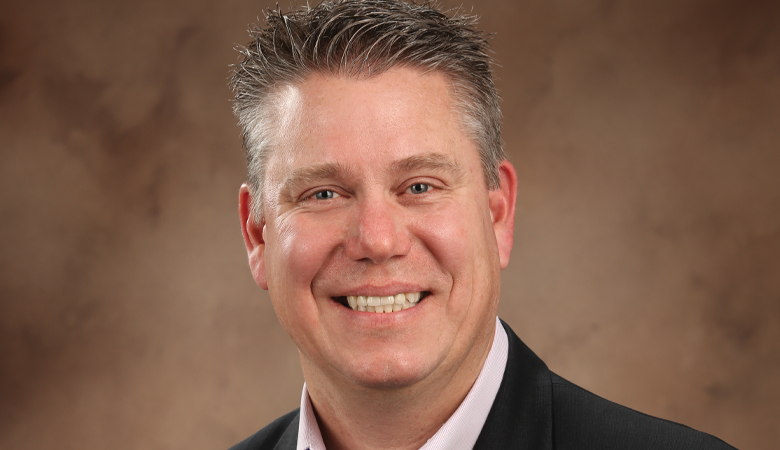
Ken Staubitz
We had four people involved, including Kevin. They covered marketing and sales, service, and production analytics. Their depth of knowledge was profound. The one who really got my attention was Vern Dye, a production analyst who became Fiery certified in 2013. We can’t stress enough how important this kind of experience is. Managing digital front ends, commonly referred to as DFEs, is a critical part of the business in installing production print products.
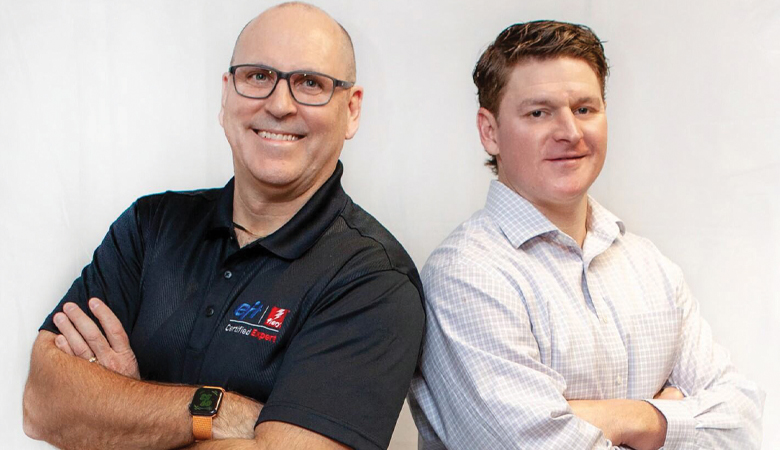
Seth Coyle and Vern Dye.
Should a customer choose to ignore the importance of the machine he has paid a significant amount of money for, it will never live up to expectations. “An expert like Vern can diagnose a problem within minutes,” said McCarthy.
The same can be said for Ken Staubitz, COO, who has a particularly good handle on the service side of production, and Seth Coyle, director of production. It really is a pleasure to meet such an experienced and informed group.
We began by discussing their experiences and general operational methods. This team can handle pre- and post-sales questions, alleviating any lengthy discussions about customers’ problems.
Modern Office Methods is a successful Canon and Ricoh dealer. We know the two manufacturers and what they provide dealers. Both lines are extensive, and a dealer should be able to do well with just one of them. We asked why carry two lines since it’s extremely expensive to do so.
The team’s response was, “We’re not married to one product line.” In other words, there are applications that are better suited for certain product lines. Once it’s determined what the application is, they provide a model that can manage and gain an incredibly happy customer. So, in Modern Office Method’s case, we get two of the best (the other two being Konica Minolta and Xerox) and let the customer decide.
We shared with them what we had learned from their fellow dealers. Many told us that you need SMEs to understand exactly what the customer will require in terms of a product.
Speaking to the three of them, it’s easy to discern that they’re all SMEs. That is so important. We asked McCarthy what he’d say if one of his fellow dealers at a BPCA meeting asked about the best way to start up a production print effort.
“Hire talented people,” he responded. It’s obvious that he’s speaking from experience. When I asked him how he went about hiring such an excellent team, he noted that Dye, by virtue of his experience, had the ability to recruit and knew who was qualified to hire.
That’s invaluable because, as McCarthy stated, “Get them [SMEs] involved in planning as well.” He could have also said recruiting, as Dye was responsible for Coyle joining Modern Office Methods.
We asked how he went about hiring Dye, the response was quite different than we usually hear. “He came with an acquisition,” revealed McCarthy.
We mentioned what a few of the other dealers we interviewed about production had to say. As noted earlier in this article, Metro Sales stressed the importance of in-plants in establishing extraordinarily successful businesses. They talked about one installation of nine RICOH 9500s, collectively worth about $6 million, over a five-year period.
Coyle spoke of an installation of 15 Canon V1350s. However, McCarthy and his team preferred not to offer specifics about what the total sale meant. We asked someone from Ricoh who would know the suggested list prices and street pricing they would yield. The Ricoh executive said they had to be vague because there could be additions to the V1350s to enhance their performance. After a little persuasion, he said it could be anywhere from $8 million, including service and supplies in a five-year period. It’s always nice to have concurrence on marketing strategy. Suffice it to say in-plants over commercial printers yield the most opportunity.
As Coyle explained further, there’s a lot of pull-through business with in-plants because they allow the sale of other print products, such as MFPs, in large numbers.
According to the MOM team, the type of applications the V1350 would address range from CAD to technical marketing materials, outdoor signage, posters, adhesive materials, and window clings.
In terms of sales, dealers advocate that you allow all your salespeople to participate in selling production print. We asked if any reps are dedicated. MOM has 45 sales reps who are trained to be spotters and who know what to look for and what questions to ask to pre-qualify an opportunity. Modern Office Methods’ production team then helps the rep, managing all the technical questions. This includes right sizing the solution, proof of concept, and all other aspects for the sale, installation, and justification for the acquisition.
We also inquired if light production was an effective way to start selling production print. Dye indicated large churches, clubs, and chambers of commerce all have production applications, as well as schools and universities. At that point we wanted to hear McCarthy’s thoughts about the benefits of selling production print.
“Production print offers great growth and staying power,” he sadi. We see it as a way for customers to leverage their data and brand for color matching and personalization of printing for consumers. The technology continues to evolve, and with the quality/speed of throughput options, high-quality digital print on demand has never been so attainable.”
In Praise of Modern Office Methods
“With over 60 years of office equipment industry experience, MOM has been in the business almost as long as Canon has—this impressive longevity can be attributed to their unwavering commitment to the customer, a core value that Canon shares. We are thrilled to have helped MOM provide outstanding support for their client’s needs through the placement of Canon technology. We’re proud to see the vote of confidence in the Canon imagePRESS V1350 digital press that MOM showed by extolling the advantages of its powerful print productivity and labor-saving automation features.” – Sam Yoshida, executive vice president and general manager, Canon U.S.A.
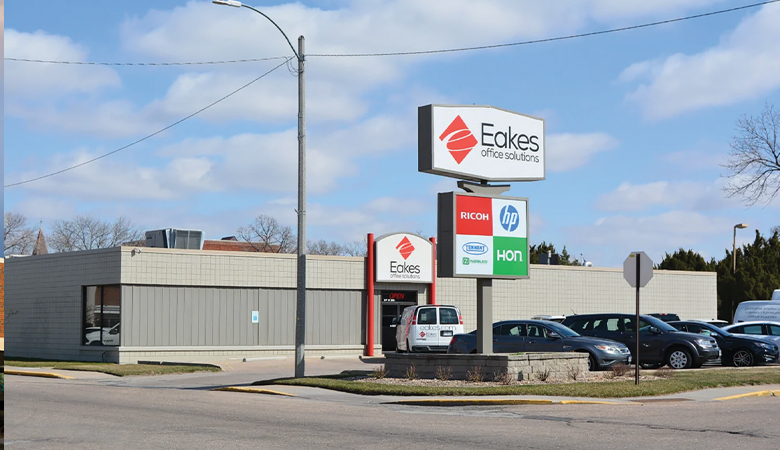
Eakes Office Solutions headquarters in Grand Island, Nebraska.
Eakes Office Solutions, Grand Island, Nebraska
Production Print OEM: Ricoh
Eakes Office Solutions isn’t located in a major market, so they must determine the real potential for selling production print in that part of the world. We’re delighted to have Mark Miller, owner of Eakes Office Solutions, share the experience of selling Ricoh for the last six years. Scott Lilleskov, production sales manager, joined Mark. They collectively answered my questions; their responses are noted as M&S.
Mark Miller and Scott Lilleskov.
There’s always someone like Scott at every dealer we interview about production print. He’s been with Eakes for nearly five years and has been in his new role as production sales manager for one year. Before Eakes, he spent 22 years with IKON and Ricoh, including 18 months supporting large Ricoh dealers.
Frank: What motivated you to add production print to your array of products for the office?
M&S: It was a combination of the opportunity and the support we had over the years selling hundreds of Sharp’s light production models. It was clear to us that selling production print would be the right way to expand the business.
Frank: In reviewing your options of production print manufacturers, whom do you believe would give you the best opportunity for success and why?
M&S: For us, it would have been Sharp. Six years ago, they weren’t in the production business. We decided to go with Ricoh, and it turned out to be a particularly good decision. We were excited about the new models—the 7500 and 9500 as they have been excellent additions. Sharp is coming on board in production, and Scott will be attending PRINTING United to see what they will be showing.
Frank: What initial steps did you take to prepare Eakes for this ambitious effort?
M&S: We knew we needed to add SMEs to the team to get the kind of results we believed we could obtain. Last October, Scott identified two production specialists. They were both analysts who have helped sales and service. They help sales identify the potential customers we have in our territory. They also teach print workflow and why you must take advantage of Fiery software.
Frank: How many salespeople do you have selling production?
M&S: We have 17 salespeople fully supported by the two analysts. They help our sales identify opportunities and ensure that they provide the correct solution for the applications that make sense for the client. Training is ongoing as we learn more each day.
Frank: What steps have you taken to learn as much as you can about production print?
M&S: Obviously, our years of selling A3 and developing marketing strategies provide our customers with what they need rather than what they want. In production, there are many applications, and we’re still learning. We’re also adapting our marketing knowledge of the territory and learning as we go along. Our manufacturers tell us about the opportunities and give us some directions that are extremely helpful.
Frank: Do you plan to expand your sales organization to sell production print?
M&S: At this point, we’re pleased with what Scott, the analysts, and the salespeople are doing. We’ll look at that in the next 12 to 18 months. Ricoh invited us to Boulder, Colorado, where they have their Customer Experience Center, and we were excited about what they showed us. As I mentioned, Scott is looking forward to going to PRINTING United to see not only what Sharp is offering but what the other manufacturers are offering. We’re excited about the future.
Frank: What advice would you give to a fellow dealer about how to best proceed in developing a production print strategy?
M&S: Hiring the right people, such as the two analysts we hired, makes a difference. Looking at the investment, the higher amount of dollars you will have to commit to selling production print will make for a successful endeavor. This requires a serious investment.
Kudos to Eakes
“Over the last two years, Eakes has made a highly concentrated effort towards production. The progress and accelerated growth have been a lot of fun to watch. It goes to show you that when top leadership makes a commitment to a core adjacency like production and engages the right way with Ricoh, it doesn’t have to take five years to see material progress. I think Eakes is just scratching the surface with bigger things to come.” – Brian Balow, vice president, graphic communications, production solutions, Ricoh USA
Eakes Captions
- Mark Miller
- Scott Lilleskov

